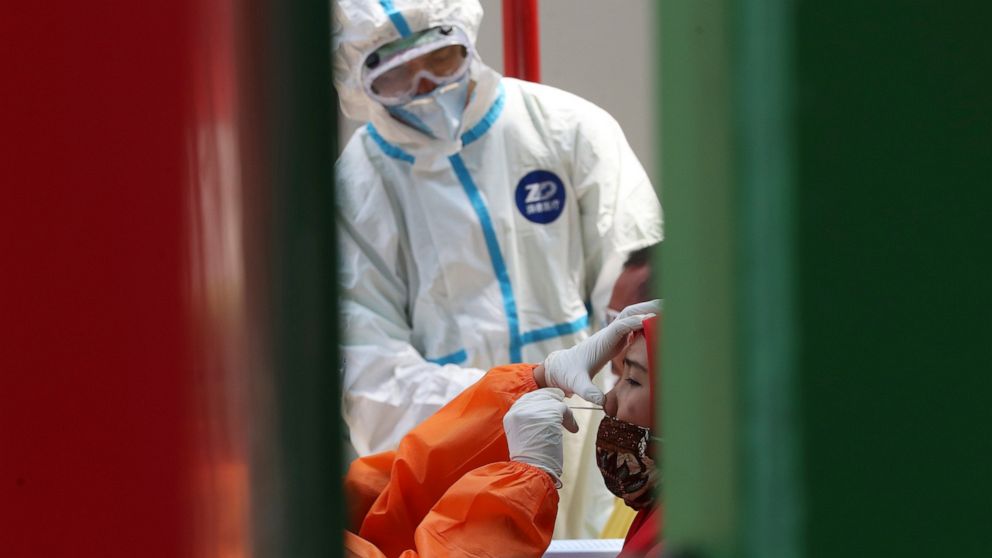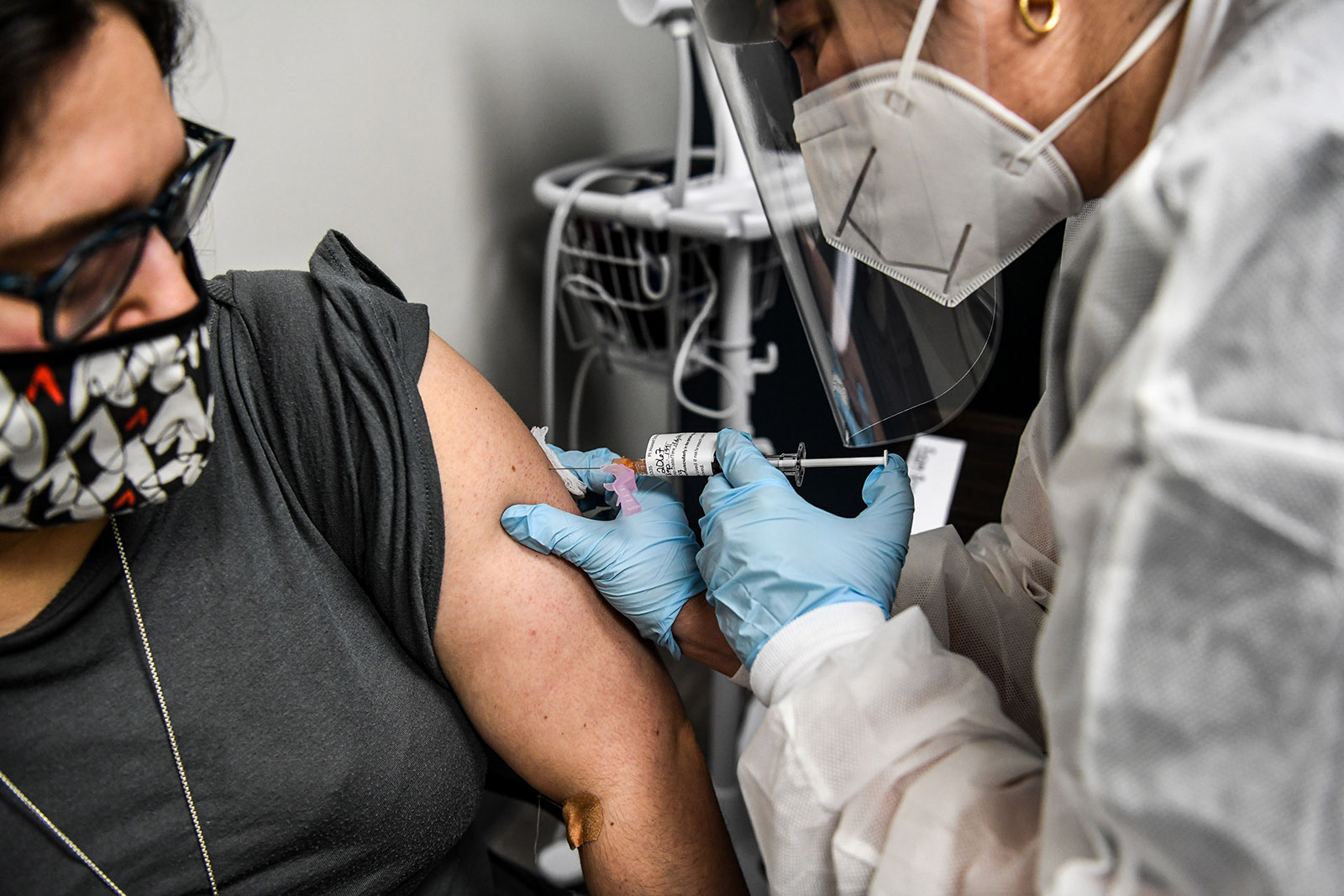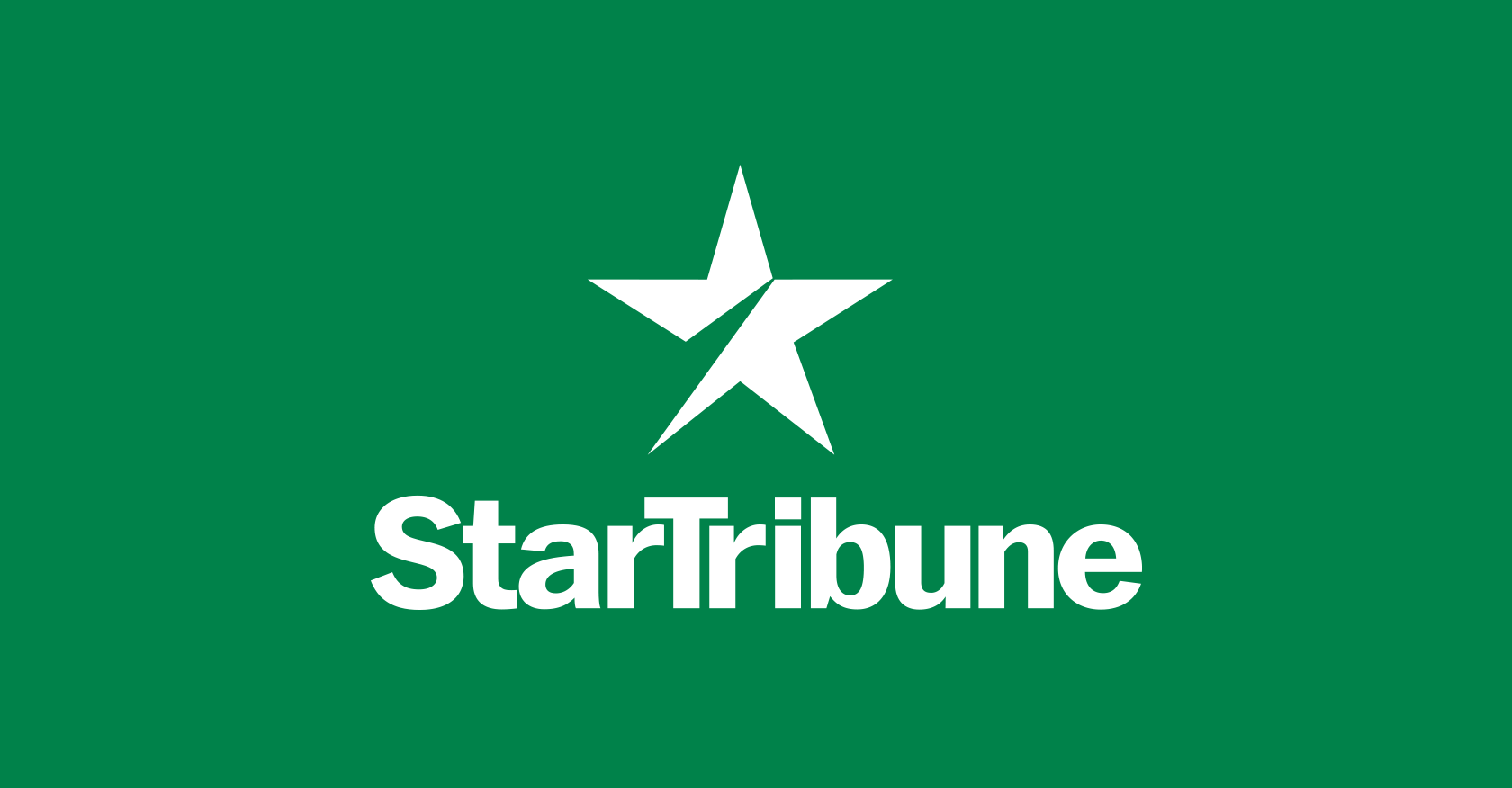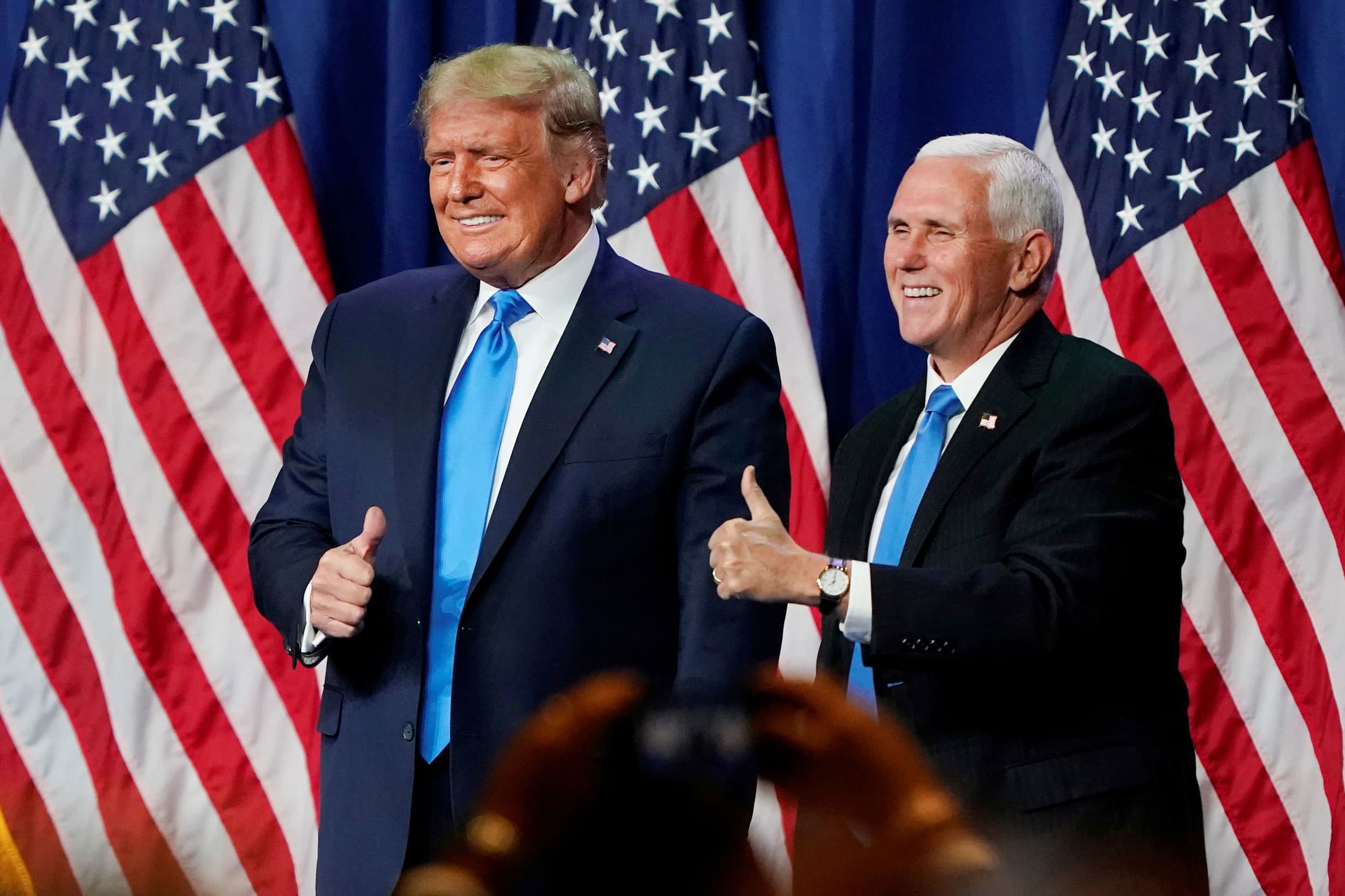
COPENHAGEN, Denmark — Finnish health authorities said Tuesday that some 900,000 people have downloaded a coronavirus tracing app a day after it was launched.
The Koronavilkku app is aimed at finding out whether a person has been exposed to the coronavirus, the Finnish Institute for Health and Welfare said, adding that the free-of-charge application was created to help break infection chains. App users send a randomly generated code via Bluetooth to others when in close contact.
“The Koronavilkku mobile app is part of the government’s test, trace, isolate and treat strategy,” said the health ministry's permanent secretary, Kirsi Varhila.
The app has been published in Finnish and Swedish, the Nordic country’s two official languages, and an English version is planned for later this year.
Finland has had more than 8,000 cases and reported 335 deaths.
———
HERE’S WHAT YOU NEED TO KNOW ABOUT THE VIRUS OUTBREAK
— At U.S. military academies, COVID-19 is the enemy to be defeated
— Pandemic brings hard times for farmers, worsening hunger
— Hong Kong begins mass testing for virus amid public doubts
— Detroit turns island park into COVID-19 memorial garden
———
Follow AP’s pandemic coverage at https://ift.tt/2xPjH8c and https://ift.tt/2wrCaXK
———
HERE’S WHAT ELSE IS HAPPENING:
PRAGUE — The Czech Republic has started the new school year, making it mandatory again to wear face masks on public transport.
The health authorities have argued that measure could help contain the coronavirus pandemic as many of almost 1.4 million students at elementary and high schools use the public transport every weekday.
Masks are also mandatory at Prague’s international airport, government and state offices, clinics and pharmacies starting Tuesday.
Strict hygiene measures are in place at schools, but the authorities reversed their initial order for all to use protective face coverings inside school buildings.
Face masks have only been recommended in schools in Prague, one of the worst-hit regions in the Czech Republic, with almost 45 infected per 100,000 people.
Education Minister Robert Plaga said about 20 of some 12,000 schools have remained closed because teachers and staffers have been quarantined.
The Czech schools were closed on March 11 and only some of them partially reopened at the end of May on a voluntary basis.
The Czech Republic has had 24,618 confirmed cases of COVID-19, including 424 deaths, according to government figures.
———
BEIJING — Children returned to school Tuesday in the central Chinese city of Wuhan, the original epicenter of the coronavirus epidemic that underwent months of lockdown but which has not seen new cases of local transmission for weeks.
State media reported 1.4 million children in the city reported to 2,842 kindergartens, primary and secondary schools as part of a nationwide return to classes.
Life has largely returned to normal in Wuhan, where the novel coronavirus was first detected late last year. After what critics called an attempt to ignore the outbreak, the city underwent a 76-day lockdown during which residents were confined to their homes and field hospitals opened to assist an overwhelmed medical system.
Wuhan marked a milestone on Sunday when its last confirmed case, a patient who brought the virus from overseas, was released from a city hospital.
———
MOSCOW — Russia’s tally of confirmed coronavirus cases surpassed 1 million on Tuesday as authorities reported 4,729 new cases. Russia has the fourth largest caseload in the world after the U.S., Brazil and India.
Experts say the true toll of the pandemic is much higher than all reported figures, due to limited testing, missed mild cases and concealment of cases by some governments, among other factors. As of Tuesday, Russia has lifted most lockdown restrictions in the majority of the country’s regions.
Last month, Russian authorities announced approval of the first-ever coronavirus vaccine — a move that Western experts met with skepticism and unease as the shots were only tested on a few dozen people. Last week, officials announced starting advanced trials of the vaccine among 40,000 people.
It remains unclear whether vaccination of risk groups — such as doctors and teachers — announced earlier this year will be part of the trials or carried out in parallel.
———
LONDON — Hundreds of thousands of British schoolchildren are heading back to classrooms, with the country watching nervously to see if reopening schools brings a surge in coronavirus infections.
Tuesday marks the start of term for about 40% of schools in England and Wales, with the rest reopening in the coming days.
Most children have been out of full-time education for more than five months, since a nationwide lockdown was imposed in March, and Prime Minister Boris Johnson’s government says the health risk to children from COVID-19 is far less than the risk to their education and well-being if they don’t go back to school.
Schools have introduced measures to reduce contact between children, such as staggering break times and keeping pupils in “bubbles” with their class or year group. Face-coverings are required in communal areas of secondary schools in districts with heightened rates of coronavirus infection.
While many parents are nervous, the government says those who refuse to send their children back to school face fines.
Scottish pupils returned in August and so far there have only been small, limited outbreaks linked to schools.
———
LONDON — AstraZeneca says a potential coronavirus vaccine has entered phase III trials in the U.S to test the effectiveness and safety of the product.
Cambridge, England-based AstraZeneca says the trial will involve up to 30,000 adults from various racial, ethnic and geographic groups across the U.S. The trial is funded by units of the National Institutes of Health and the Department of Health and Human Services.
AstraZeneca says development of the vaccine known as AZD1222 is moving ahead globally with late-stage trials in the U.K., Brazil and South Africa. Further trials are planned in Japan and Russia. The potential vaccine was invented by the University of Oxford and an associated company, Vaccitech.
Meanwhile, AstraZeneca is gearing up for large-scale production of the vaccine.
Oxford Biomedica said Tuesday that it had signed an agreement with AstraZeneca for “commercial manufacture” of AZD1222. The company says it will reserve capacity at a new manufacturing center in Oxford, England, for an initial period of 18 months, with the possibility of extending the deal for a further 18 months.
Oxford Biomedica says it will receive 15 million pounds ($20 million) as a capacity reservation fee, plus as much as 35 million pounds for the manufacture of multiple large-scale batches of the vaccine if it proves effective.
———
PARIS — Millions of French children starting going back to school Tuesday despite a recent rise in virus infections, in a nationwide experiment aimed at bridging inequalities and reviving the economy.
“The virus is still there, and you have to protect yourself,” President Emmanuel Macron said in an Instagram video aimed at France’s more than 12 million schoolchildren on their first day back.
He spoke masked. Masks are required throughout the school day for all students 11 and over, and all teachers and school staff.
Masks are also mandatory starting Tuesday in all French workplaces, as the government encourages parents to return to the job while trying to keep infections under control. France reported 3,082 new coronavirus cases Monday, down from recent days but still higher than European neighbors and well above the few hundred daily cases reported in May and June, before summer vacations sent infections rising again. France has reported more than 30,600 deaths related to the virus.
———
BEIJING — Chinese students on Tuesday began a full return to regular classes following two weeks without new cases of local transmission in the country.
About 75% of students had already returned to school and the remainder will return beginning from Tuesday.
Reports said students had their temperatures checked on arrival but rules on social distancing and mask wearing varied depending on the region.
Çhina’s National Health Commission reported 10 new cases of coronavirus on Tuesday, all of them brought from outside the country. China has reported a total of 4,634 deaths from COVID-19 among 85,058 cases since the virus was first detected in the central Chinese city of Wuhan late last year.
———
JERUSALEM — Israel has opened its new school year while facing a persistently high coronavirus infection rate, with restrictions in place to try to prevent the virus’s spread.
Classes begin Tuesday in most of the country, with an estimated 2.4 million students returning to school. But in 23 communities that the health ministry classified as outbreak epicenters, the reopening will be delayed.
Students from third grade and up are required to wear face masks in the classroom. Class sizes for most grades will be limited to 18 students. Middle and high school students will study in the classroom only twice per week, with the remainder of lessons being held online.
Israel has recorded over 116,000 cases of the virus since the start of the pandemic, including 939 deaths. The country saw a major spike in new cases after it reopened the economy and schools following the nationwide lockdown in May.
———
NEW DELHI — A single-day spike of nearly 70,000 new coronavirus cases, the lowest daily surge in the last six days, has driven India’s overall tally to almost 3.7 million.
The Health Ministry on Tuesday also reported 819 deaths in the past 24 hours, taking total fatalities up to 65,288.
India has been reporting the highest single-day caseload in the world every day for nearly three weeks and is the third worst-hit country behind the United States and Brazil. But it now conducts nearly 1 million tests every day and the recovery rate of virus patients is more than 76%.
Meanwhile, the federal government on Monday said the country’s parliament will resume on Sept. 14 with strict physical distancing norms. The parliament was adjourned in March just before a nationwide lockdown was announced to contain the pandemic.
———
MANILA, Philippines — Gyms, barber shops and internet cafes were allowed to reopen partly in the Philippine capital Tuesday as the government further eased quarantine restrictions despite the country having the most coronavirus infections in Southeast Asia.
President Rodrigo Duterte, however, placed the southern city of Iligan under a mild lockdown after a rise in community infections, underscoring how COVID-19 cases have spread away from the capital, metropolitan Manila, the epicenter of the pandemic in the country.
Night curfew hours have been shortened in most cities in the capital and outlying provinces under the new arrangements, which will last for a month.
Duterte announced that medical personnel, who could be ejected because of fears by landlords that they are virus carriers, would be given free billeting and food near their hospitals.
More than 220,000 confirmed COVID-19 cases, including about 3,500 deaths, have been reported in the Philippines, which has struggled to find a balance between restricting public mobility to curb the virus and reviving an economy that has fallen into recession.
———
HONG KONG — Hong Kong has kicked off a voluntary mass-testing program for coronavirus as part of a strategy to break the chain of transmission in the city’s third outbreak of the disease.
The testing program began Tuesday with residents making their way to more than 100 testing centers staffed by over 5,000 volunteers. It is aimed at identifying silent carriers without symptoms who could be spreading the disease.
The virus-testing program has become a flashpoint of political debate in Hong Kong. Many are distrustful over resources and staff provided by China’s central government and fear that their DNA could be collected during the exercise.
———
MELBOURNE, Australia — Australia’s hard-hit Victoria state has reported its lowest daily tally of new COVID-19 cases since June as a lockdown continues to slow infections.
The health department on Tuesday reported 70 new infections and five deaths in the latest 24-hour period. It is the lowest tally of new infections since 67 were reported on June 30.
The latest weeklong average is 104 new cases a day, down from 184 in the previous week.
A six-week statewide lockdown is due to end on Sept. 13. The government will outline its plans to reopen the economy next Sunday.
The infection rate is not expected to fall to low double digits by Sept. 13. Health authorities have said such a reduction in infections would be required before they could safely lift restrictions.
———
WASHINGTON — Dr. Anthony Fauci, the federal government’s top infectious disease expert, says Labor Day weekend will be key in determining whether the U.S. gets a “running start” at containing the coronavirus this fall.
Fauci said Monday he has a “great deal of faith in the American people” to wash their hands, practice social distancing, wear masks, avoid crowds, and congregate outside during the weekend celebrations. He said it’s important to avoid a surge in coronavirus cases like those seen after the Memorial Day and July 4th holidays.
He made the comments on a White House conference call with governors, the audio of which was obtained by The Associated Press.
Vice President Mike Pence said he shared Fauci’s confidence in the American people to celebrate the holiday responsibly.
———
JACKSON, Miss. — Mississippi Gov. Tate Reeves says he is extending a statewide mask mandate and most other restrictions another two weeks to try to slow the spread of the new coronavirus. He made a single change — eliminating a cap of two spectators per participant at high school sports events.
Republican Reeves said a limit of 25% capacity remains in place for stadiums, gyms, and other venues, and people should maintain social distance from those who are not in their immediate families.
As the University of Southern Mississippi prepares to host its first home football game on Thursday, Reeves said his prohibition on tailgating at college games also remains in place at least two more weeks.
“I’d rather be in the South where we can’t have tailgating, where we have rules in place but we are going to have football, than to be in the Pac-12 where they’re not even going to have football,” Reeves said.
———
NICOSIA, Cyprus — Cyprus’ Health Ministry says anyone taking part in a peaceful protest is obligated to wear a face mask and keep at least 5 feet (1.5 meters) from other demonstrators.
The ministry issued guidelines on Monday on how public demonstrations are to be conducted in line with health protocols to prevent the spread of the coronavirus. It said the distribution and sharing of pamphlets among demonstrators is prohibited, and food and other vendors aren’t permitted at the protest site.
Organizers must appoint a liaison who will be charged with communicating with police and ensuring that demonstrators stick to the guidelines. Cypriot Justice Minister Emily Yiolitis said the point of the guidelines isn’t to limit citizens’ democratic rights, but to ensure that people are protected from the virus’ spread.
———
CHICAGO — Chicago Mayor Lori Lightfoot has predicted a roughly $1.2 billion hole for the 2021 budget, blaming the coronavirus pandemic as the “single largest driver” of economic challenges.
She says tourism, transportation and the hospitality industry have been hit hardest. Lightfoot presented the city’s budget forecast Monday, saying the current budget will have a roughly $800 million shortfall. She says federal help will be needed as cities nationwide struggle.
———
UNITED NATIONS — The United Nations chief says the COVID-19 pandemic has deepened the inequality between men and women and reversed “decades of limited and fragile progress on gender equality and women’s rights.”
Secretary-General Antonio Guterres warned young women from civil society organizations at a virtual town hall meeting on Monday that “without a concerned response, we risk losing a generation or more of gains.”
During the pandemic, he said “women have been on the front lines of the response, as health care workers, teachers, essential staff and as carers in their families and communities.” A majority of health care workers are women, but less than a third are in decision-making roles, he said.
Guterres said the pandemic has impacted physical and mental health, education, and labor force participation. He also noted reports in some places of increases in teenage pregnancies and gender-based violence.
"virus" - Google News
September 01, 2020 at 05:07PM
https://ift.tt/34Uga78
The Latest: 900,000 in Finland download virus tracing app - ABC News
"virus" - Google News
https://ift.tt/2OagXru





